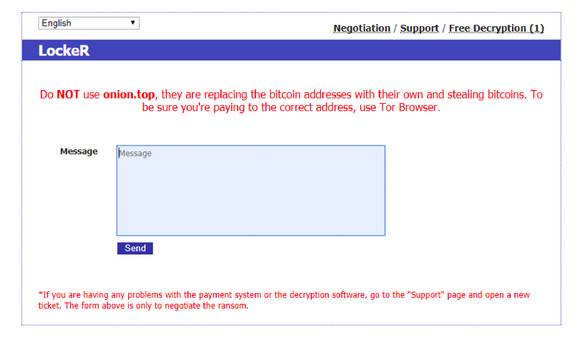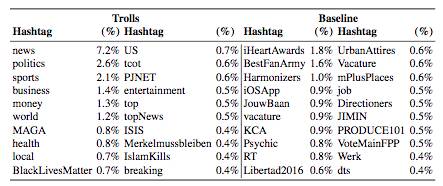Digital Extortion to Expand Beyond Ransomware
When we think of digital extortion, we typically think of ransomware. But cybercriminals now are looking outside ransomware for new ways to shake down organizations.
Cybercriminals have learned that many businesses will pay if a ransomware attack cripples their day-to-day operations. Ransomware drove the spike in digital extortion in 2017 and remains cybercriminals’ weapon of choice, according to a new Trend Micro study “Digital Extortion: A Forward-Looking View.”
But threat actors are exploring new extortion tactics. “Some of the attacks we’ve seen highlight a shift in the model itself,” says Trend Micro chief cybersecurity officer Ed Cabrera. “As we expand our digital footprint, I think it creates an enormous opportunity for attackers to identify areas where they can have immediate impact.”
The criminal extortion framework has been around in the physical world for a long time, he continues. Now, in the digital world, it’s just getting started. Attackers are learning their chances of getting paid increase exponentially if they target certain files, systems, or databases. While ransomware will remain popular, but other types of threats are starting to appear, according to Trend Micro.
Extortion attacks and critical infrastructure
“Going forward, you would be remiss to just focus on files,” says Cabrera. Cybercriminals will begin to leverage the growth of IoT, specifically industrial IoT, to extort money from victims. Businesses that need to be up and running at all times are especially vulnerable.
“Any organization that has real-time services, real-time operations that are impacted, will be targeted,” he continues. Critical manufacturing and healthcare are prime examples, with attacks that target manufacturing plants and robots as well as sensitive files and documents.
These plants and machines typically run on legacy systems and diverse hardware that would be difficult – if not impossible – to patch or upgrade. For attackers seeking old vulnerabilities, these systems are prime targets. Trend Micro’s report highlights supply chain disruption, in which attackers insert logic bombs or Trojans into specific network locations, as one example. Victims will need to pay to find the bugs’ locations so they can disable them.
Digital files, normally targeted in ransomware attacks, are not as well-protected as critical processes. Threat actors want to “peel the onion,” Cabrera says, and get to core infrastructure data that businesses will pay to save. “They’re going to go deeper and deeper into organizations to find those processes … if those are impacted, you know they’re going to pay.”
Social media extortion is another growing threat. One form is the smear campaign, which spreads fake information and demands victims pay in orde to stop it. These campaigns, once more common among celebrities and politicians, have begun to target brands and executives. Once a business’s reputation has been tarnished online, it is difficult to rebuild.
“We live in a reputation economy,” Cabrera points out. “CEOs and board members, especially in this day and age of social, are heightened to the fact that anything they say, good or bad, is taken and can be immediately seen [online].”
Ransomware isn’t going anywhere
“I’d say ransomware isn’t going away; it’s just going to continue to evolve,” says Cabrera.
Security experts across the industry have noted the spike in ransomware, which hit a 90% detection rate for enterprise victims in 2017. More than 50% of businesses were hit with ransomware last year and on average, they were struck twice, reports Sophos.
Ransomware has proven a reliable moneymaker for cybercriminals and financial drain for victims. The median total cost of a ransomware attack was $133,000, Sophos found. This includes ransom, downtime, manpower, device cost, network cost, and opportunity cost. Five percent of the survey’s 2,700 respondents said total ransomware cost ranged from $1.3 million to $6.6 million.
Over the next year, Trend Micro expects ransomware criminals will add new features to their digital weapons by reusing “the old book” of traditional malware techniques. This may include PE (portable executable) infectors and more aggressive delivery tactics to drive the speed and spread of attacks. Analysts also suggest criminals will create systems to minimize their interaction with victims.
The arrival of GDPR will shift cybercriminals’ extortion strategies, Cabrera says. They understand the upcoming changes, and the penalties companies will have to pay if they’re not compliant. He anticipates they’ll use the new rules as leverage to get victims to pay for data.
“They’re just scratching the surface in understanding what motivates organizations,” he explains. “Not only are they fine-tuning the tools they’re using to go after organizations, they’re understanding all the financial aspects … I absolutely believe GDPR will be utilized as a tool to affect the payment of ransom.”
To pay or not to pay?
The question remains: when you’re hit with an extortion attack, should you pay? If your company is at the point where this is your last option, you have failed, Cabrera says.
“Gone are the days where we had ransomware hitting our personal PCs and it was more of a nuisance than an enterprise risk,” he notes. “You should have a pretty robust plan to deal with digital extortion.”
There are many reasons not to pay, but organizations that fail to plan find themselves weighing the pros and cons of payment.
If, or when, they are attacked, businesses need people, processes, and technology in place to mitigate the risk. There is no guarantee you’ll get your data back when it’s taken. Further, even if you do get it back, there is no guarantee it hasn’t been copied or compromised.
“Even if that data has been slightly altered, that could impact operations for weeks or months to come,” Cabrera says.
Related Content:
- Hack Costs Coincheck Cryptocurrency Exchange $530 Million
- DNS Hijacking: The Silent Threat That’s Putting Your Network at Risk
- Former CIA CTO Talks Meltdown and Spectre Cost, Federal Threats
- Endpoint and Mobile Top Security Spending at 57% of Businesses
Kelly Sheridan is Associate Editor at Dark Reading. She started her career in business tech journalism at Insurance Technology and most recently reported for InformationWeek, where she covered Microsoft and business IT. Sheridan earned her BA at Villanova University. View Full Bio
Article source: https://www.darkreading.com/endpoint/digital-extortion-to-expand-beyond-ransomware/d/d-id/1330940?_mc=rss_x_drr_edt_aud_dr_x_x-rss-simple


